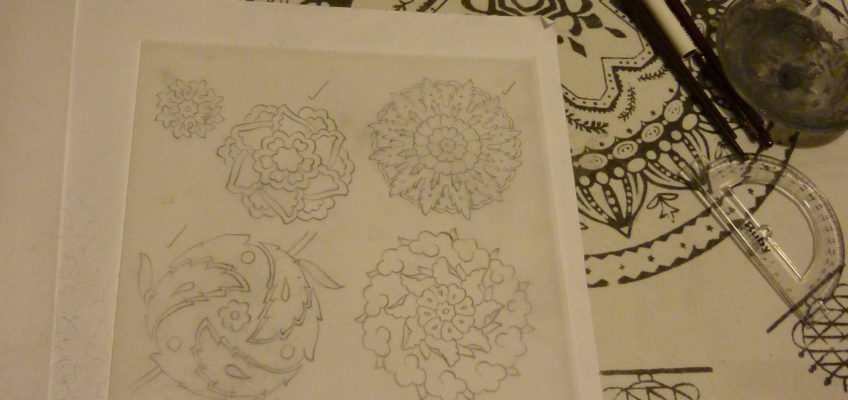(Here’s some I prepared earlier… funnily enough the tablecloth also has a giant ‘penç’ on it too!)
I was thrilled when Poppy looked at my leaves and decided I could graduate to the next step…
Step 1: Leaves
Step 2: Penç forms
…
So what are ‘pench’ (penç) forms? Imagine you take a flower in your hand – say a rose – and look down at it from the top, looking down into the centre of the flower surrounded by petals… as if you were in the sky and admiring the flower from a bird’s eye view OR imagine you take the flower and cut it across horizontally line so the top half of the flower drops off.. and then you look at the cross section of the bottom half still on the stalk… That’s what a ‘penç’ is trying to capture! Remember in Islamic art it’s forbidden to draw direct representations; this is one way artists chose to stylise their flowers to be both familiar and naturally inspired, yet also strangely foreign and respectfully different.
Technically speaking, a penç should be cyclical and use a design that’s repeated all the way around, either completely symmetrical, or with a cyclical rotation that completes itself through 360 degrees. Usually when planning one you draw a circle the size you want, then divide it into 6 or 8 segments from the centre. Then you design one segment on tracing paper, before rotating the paper around 6 or 8 times and effectively copying the segment repeatedly to complete the design through the whole circle. The different parts you draw can symbolise petals, stamen, sepal or even seed store (meşime) in the centre, all cut as a horizontal cross section.
So there we have it. Off to draw more…



Leave a Reply